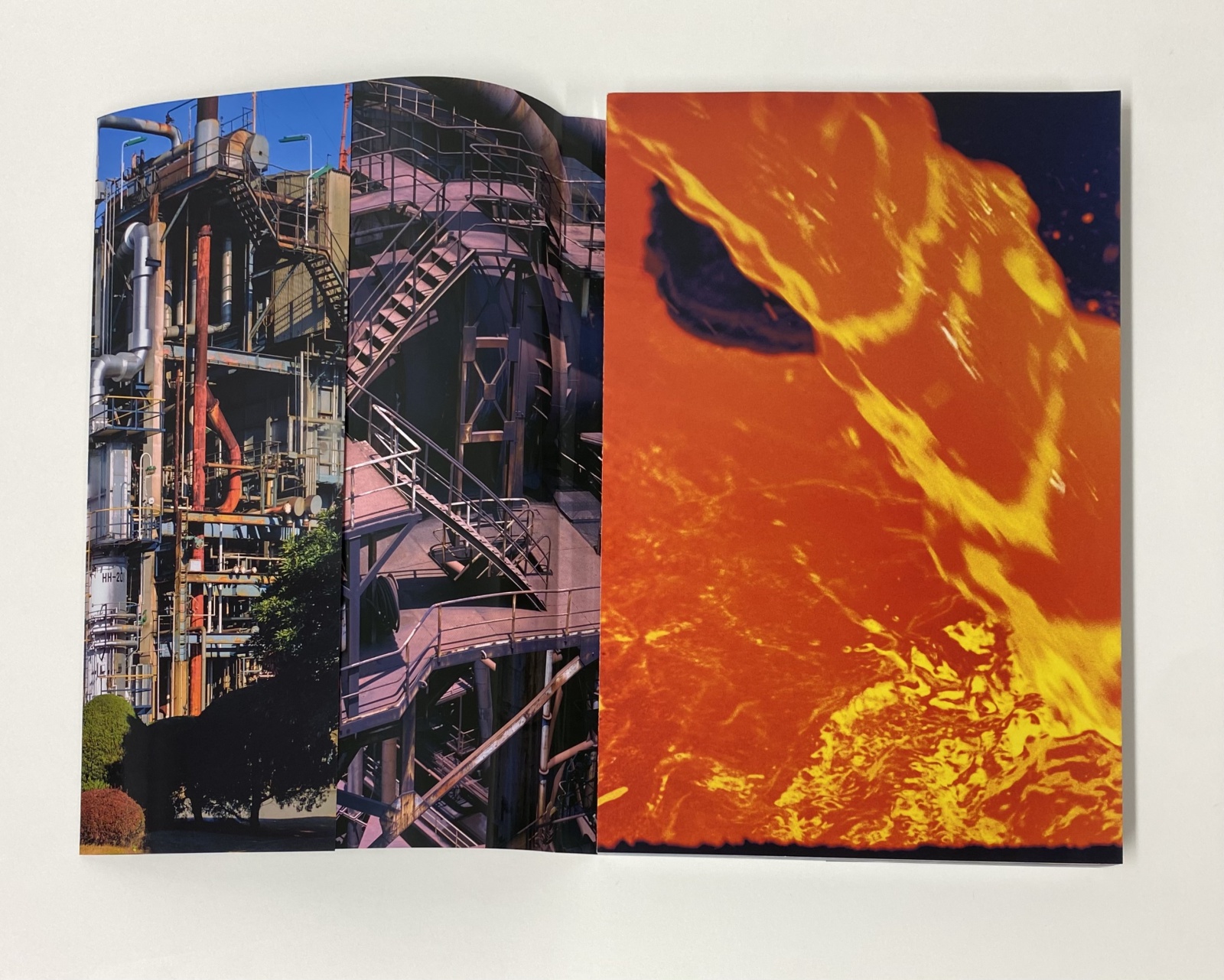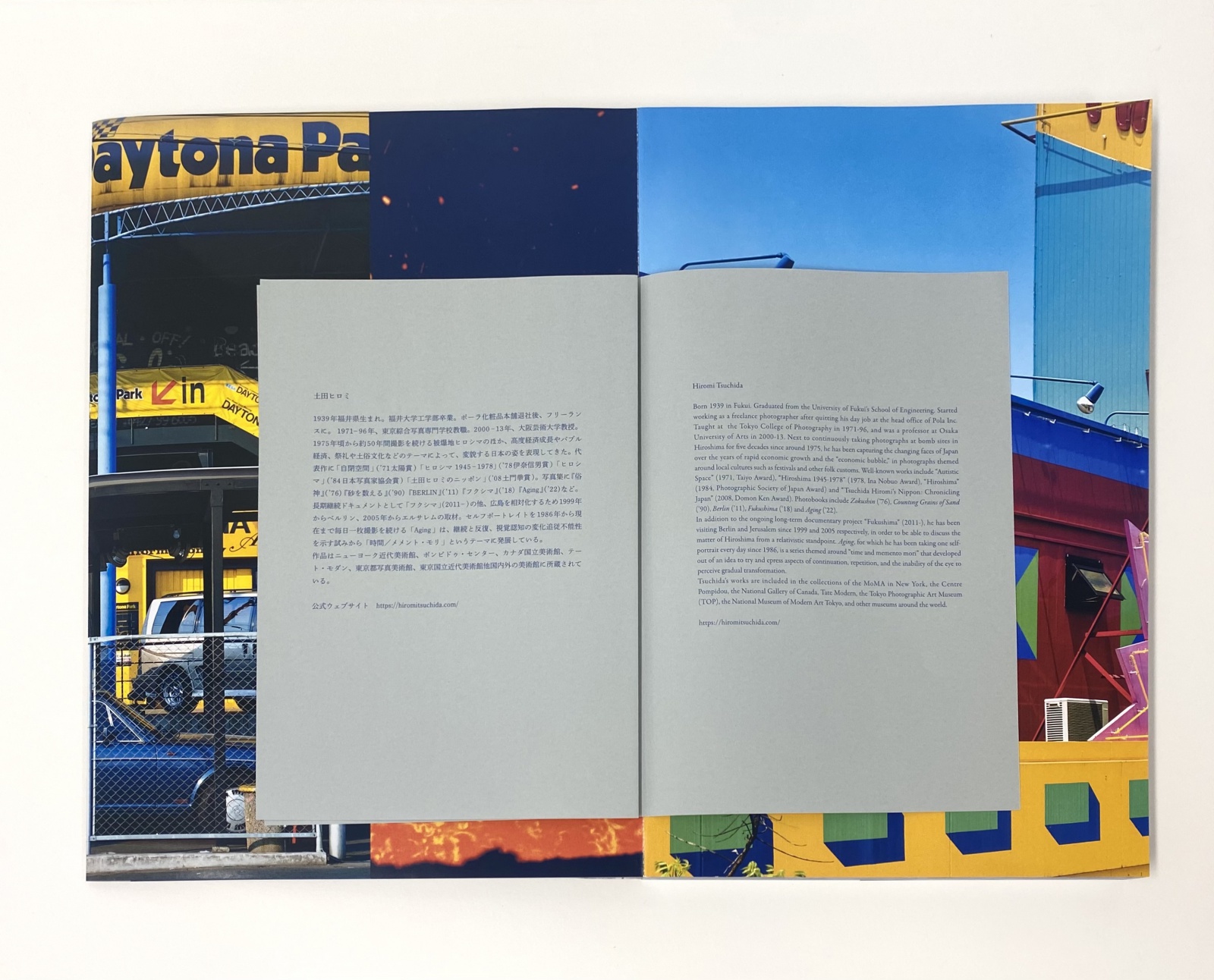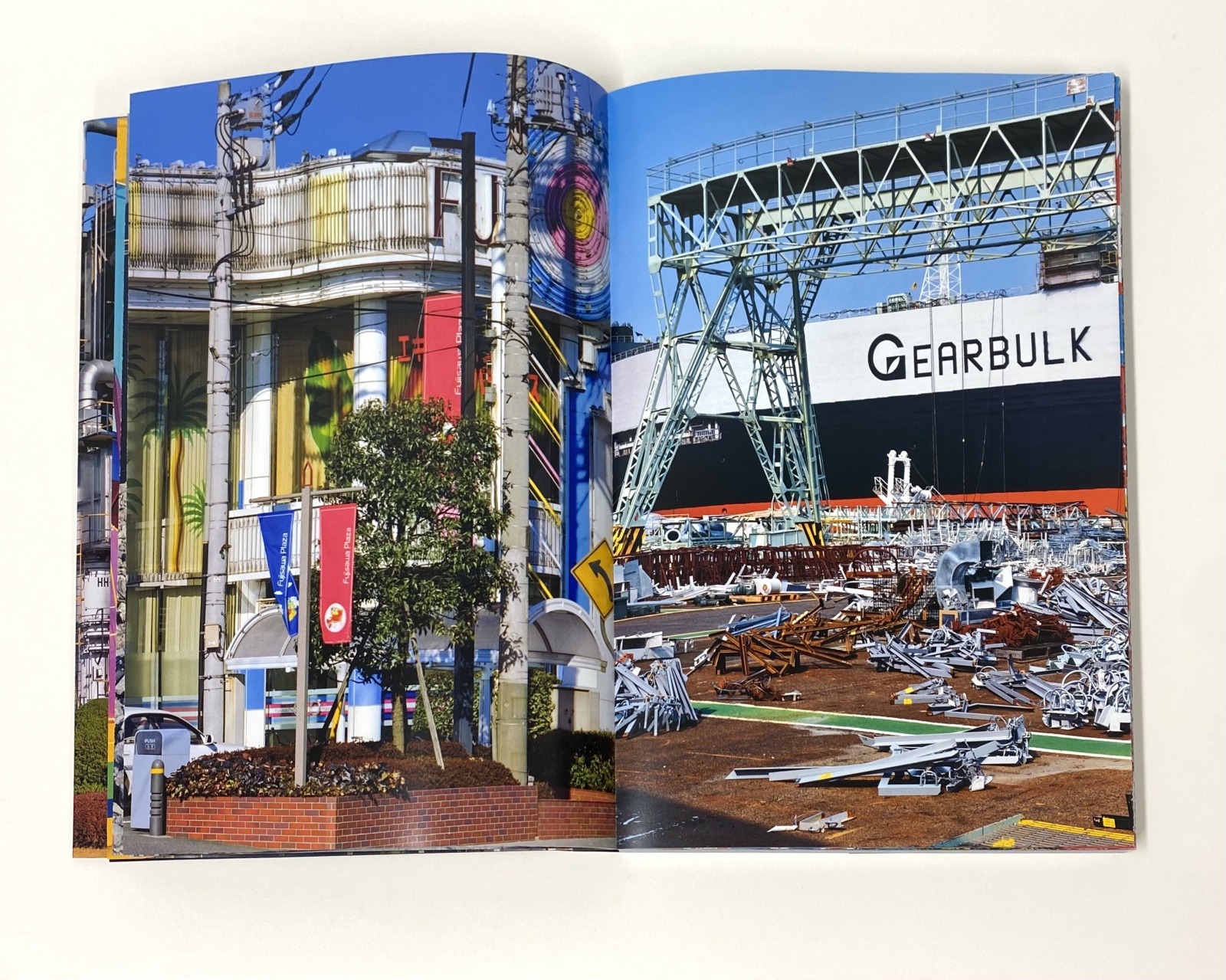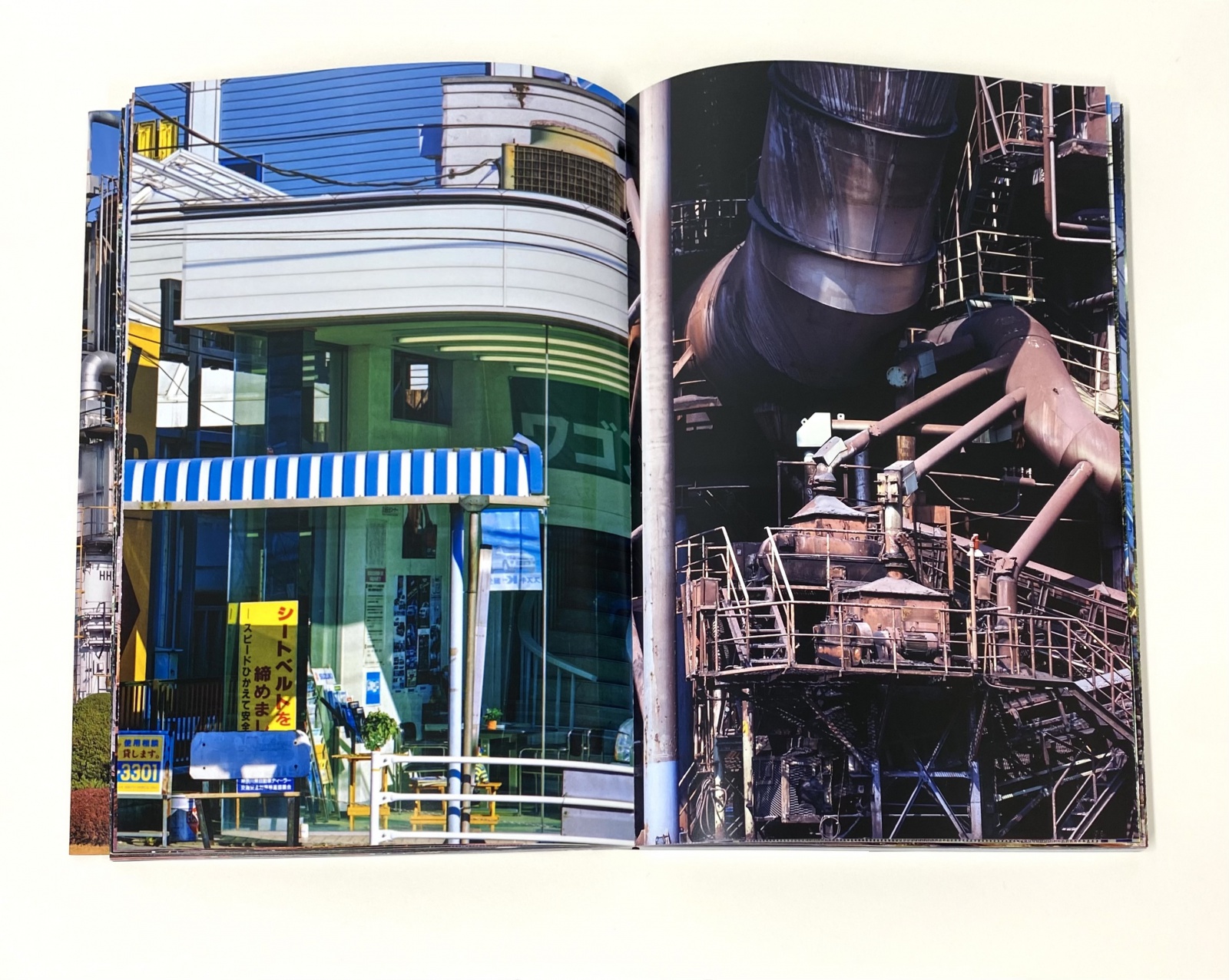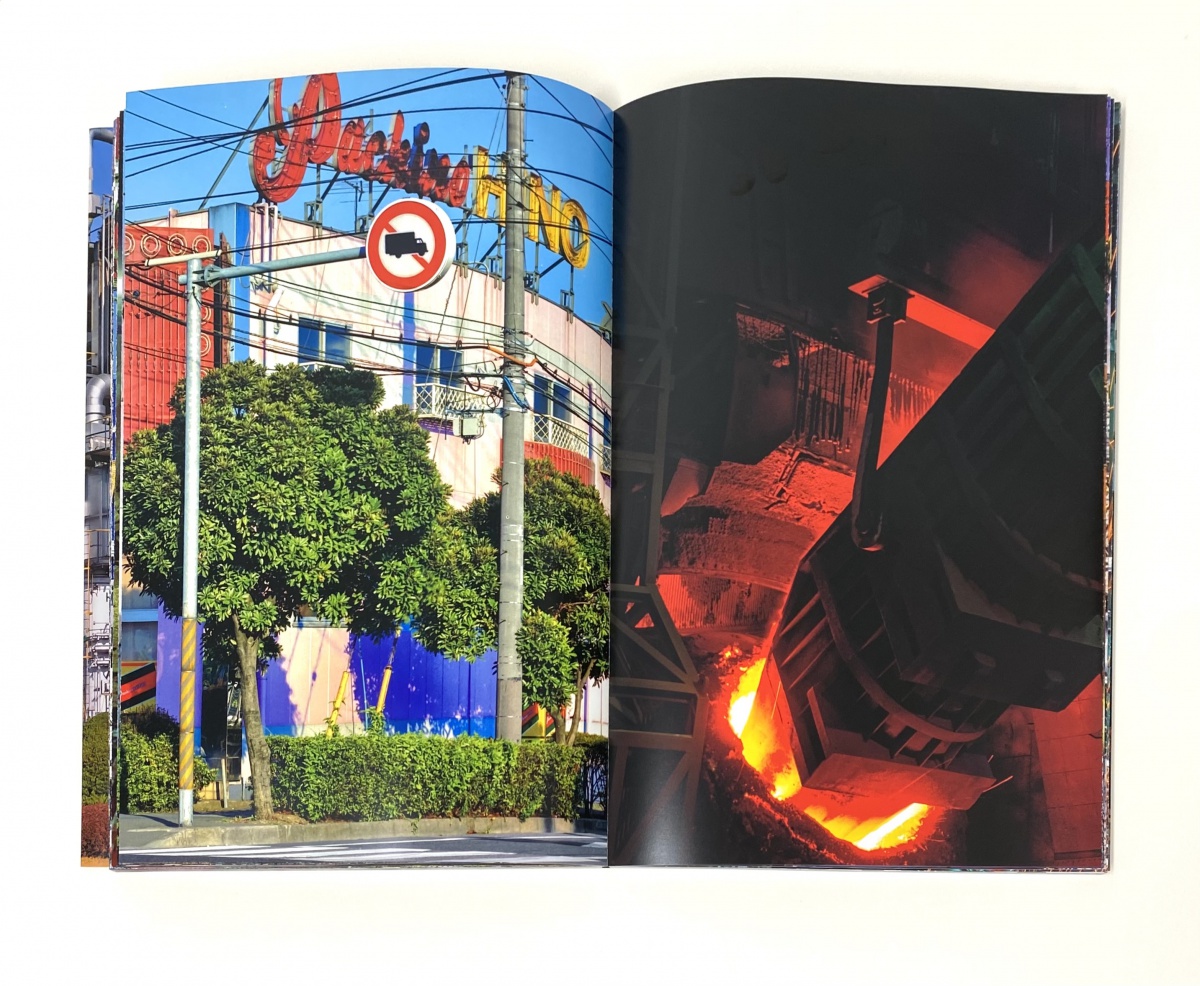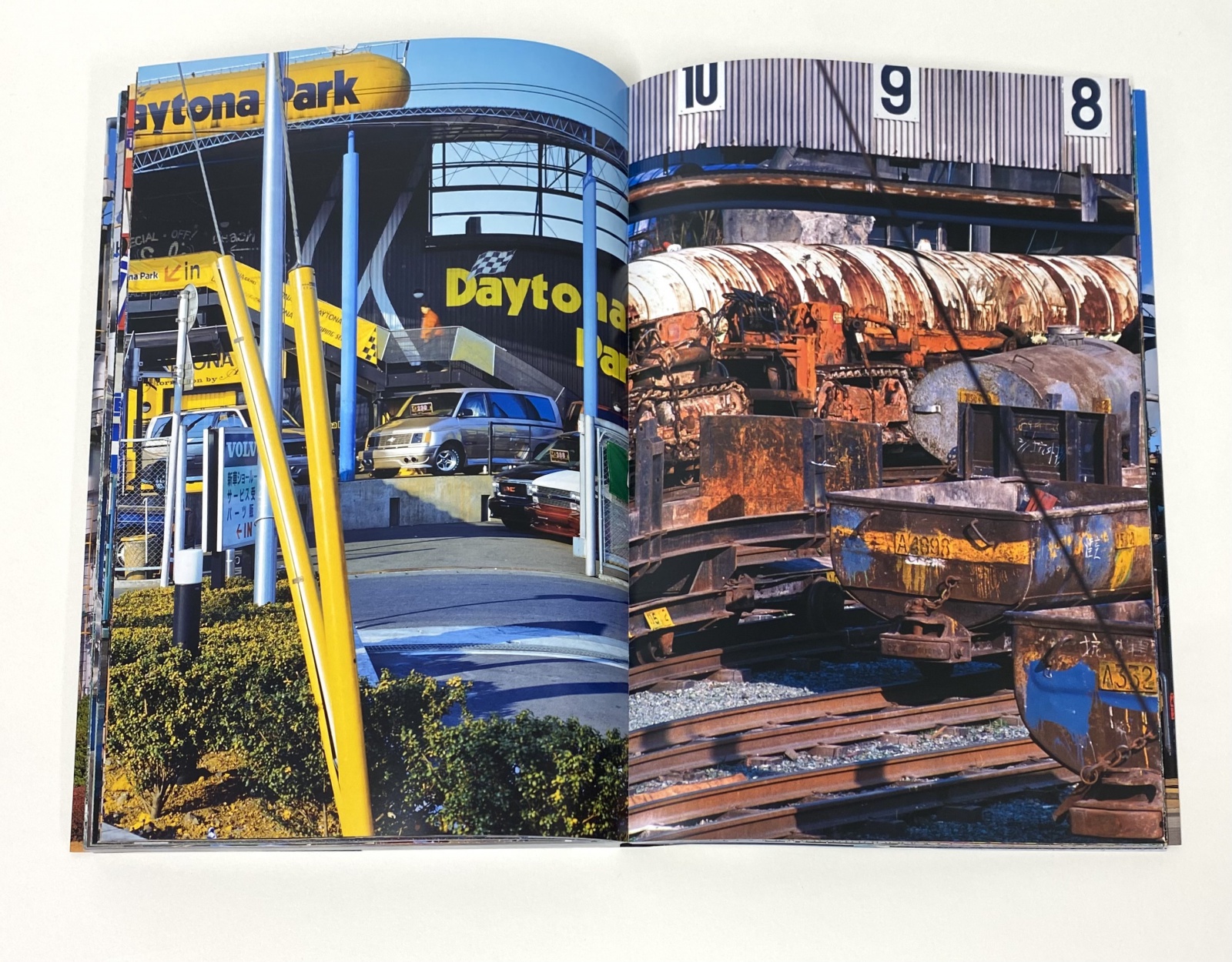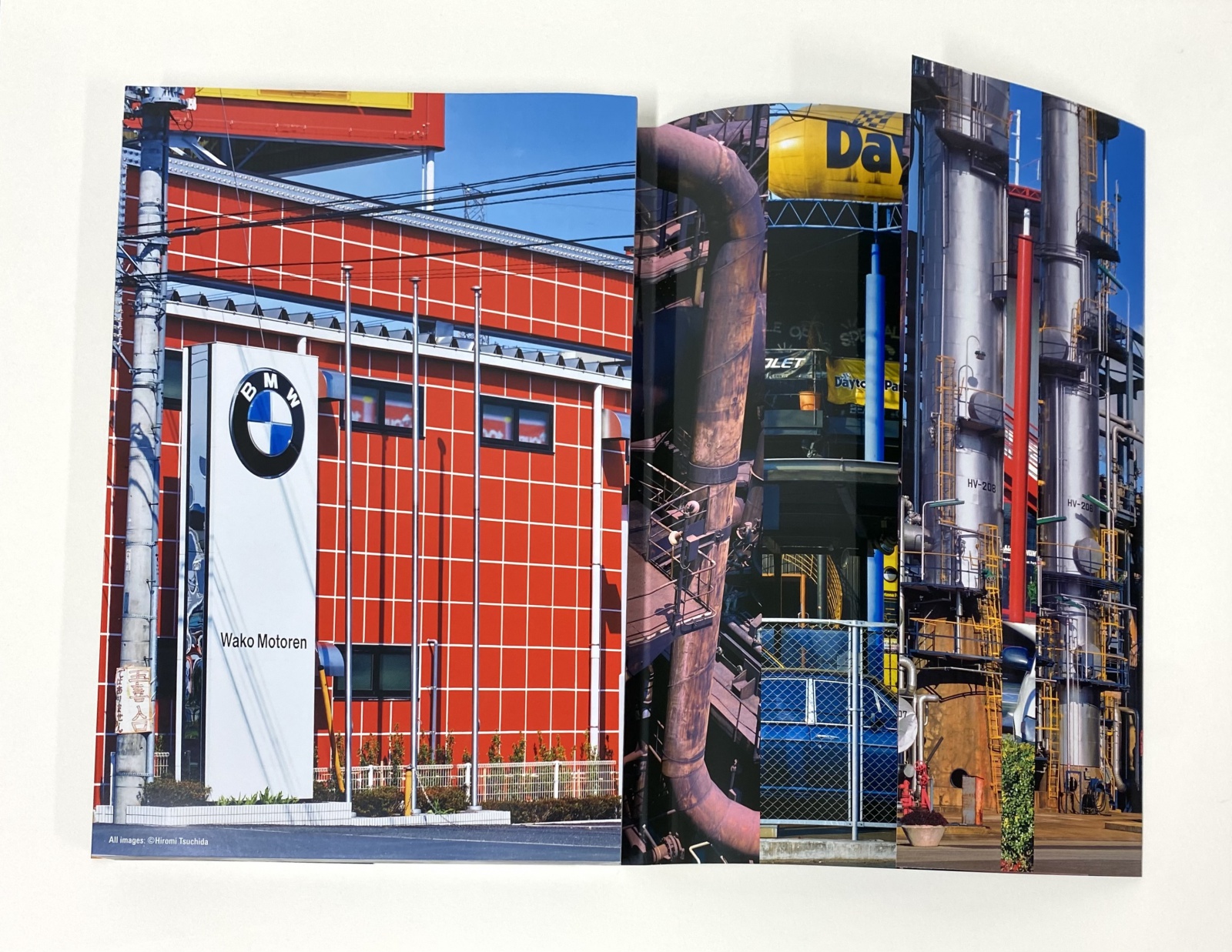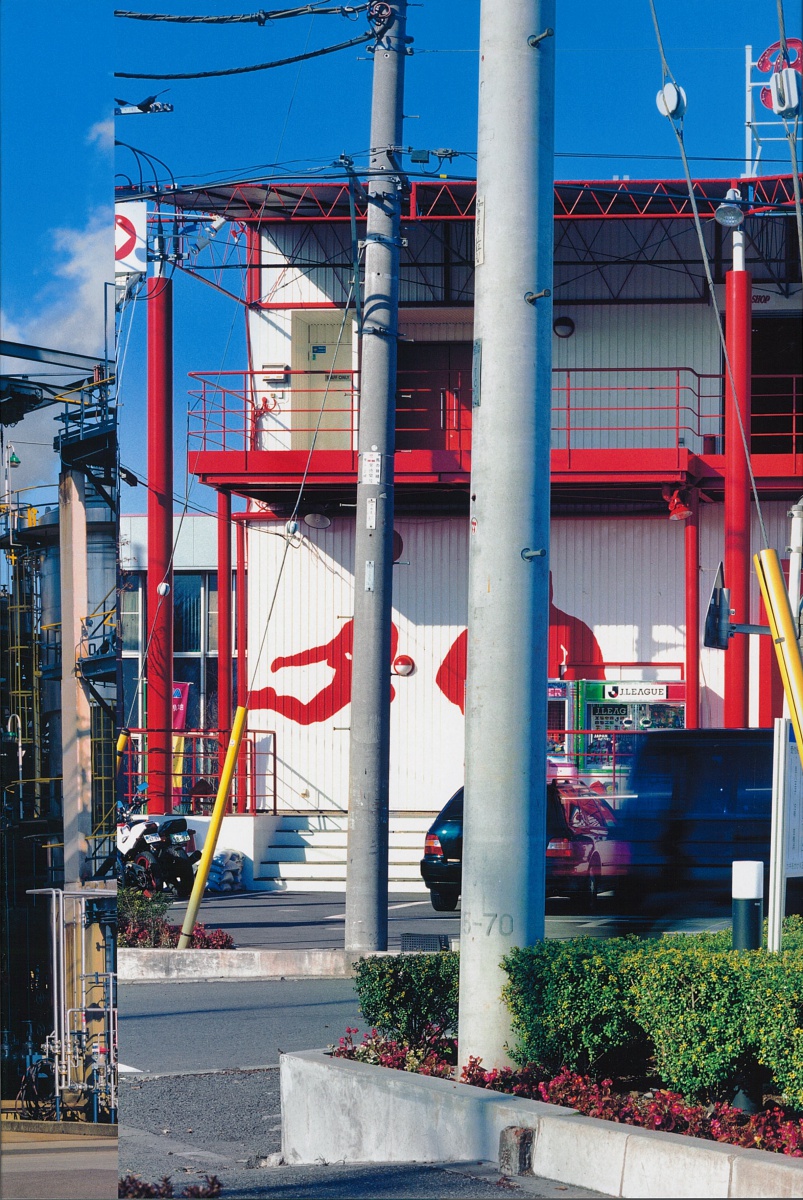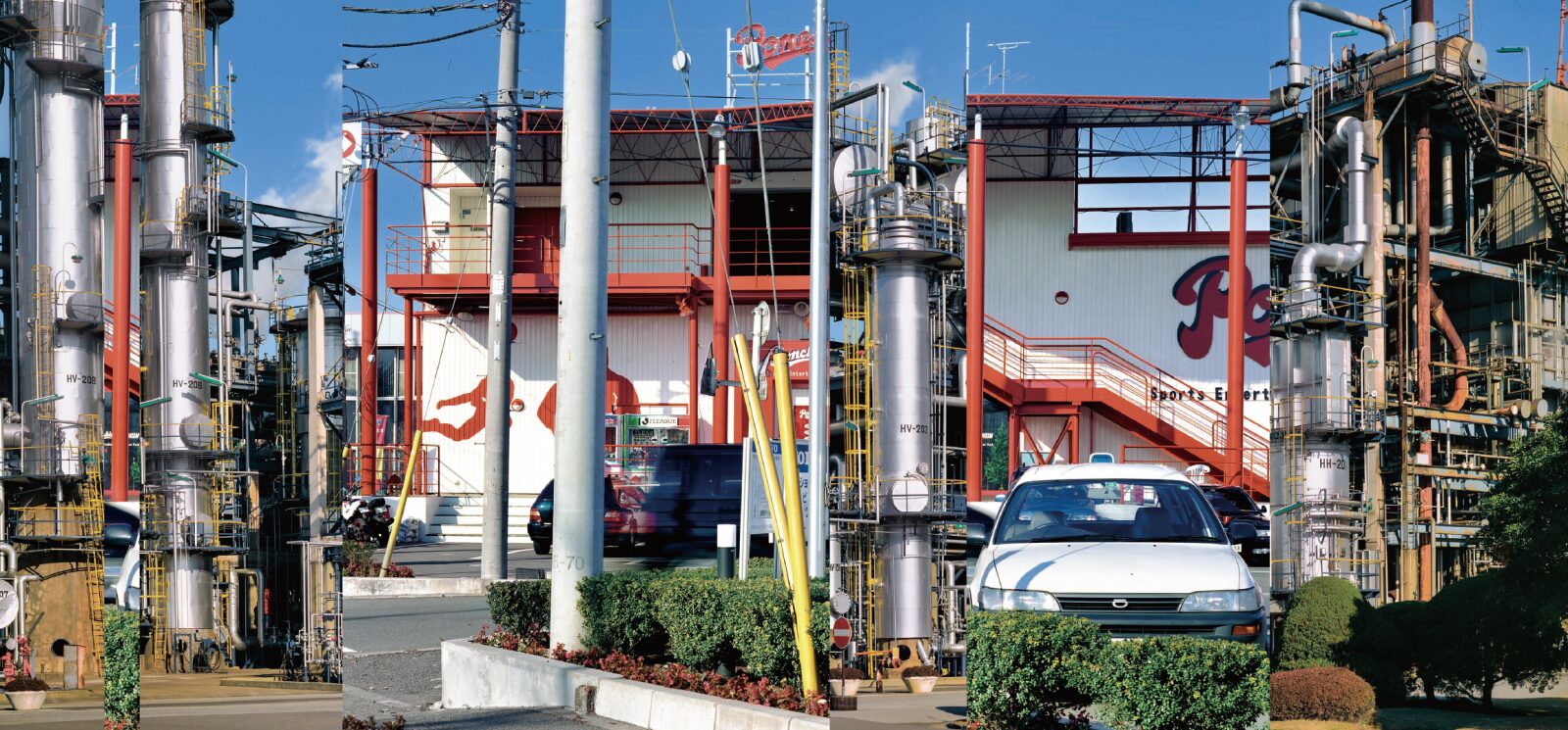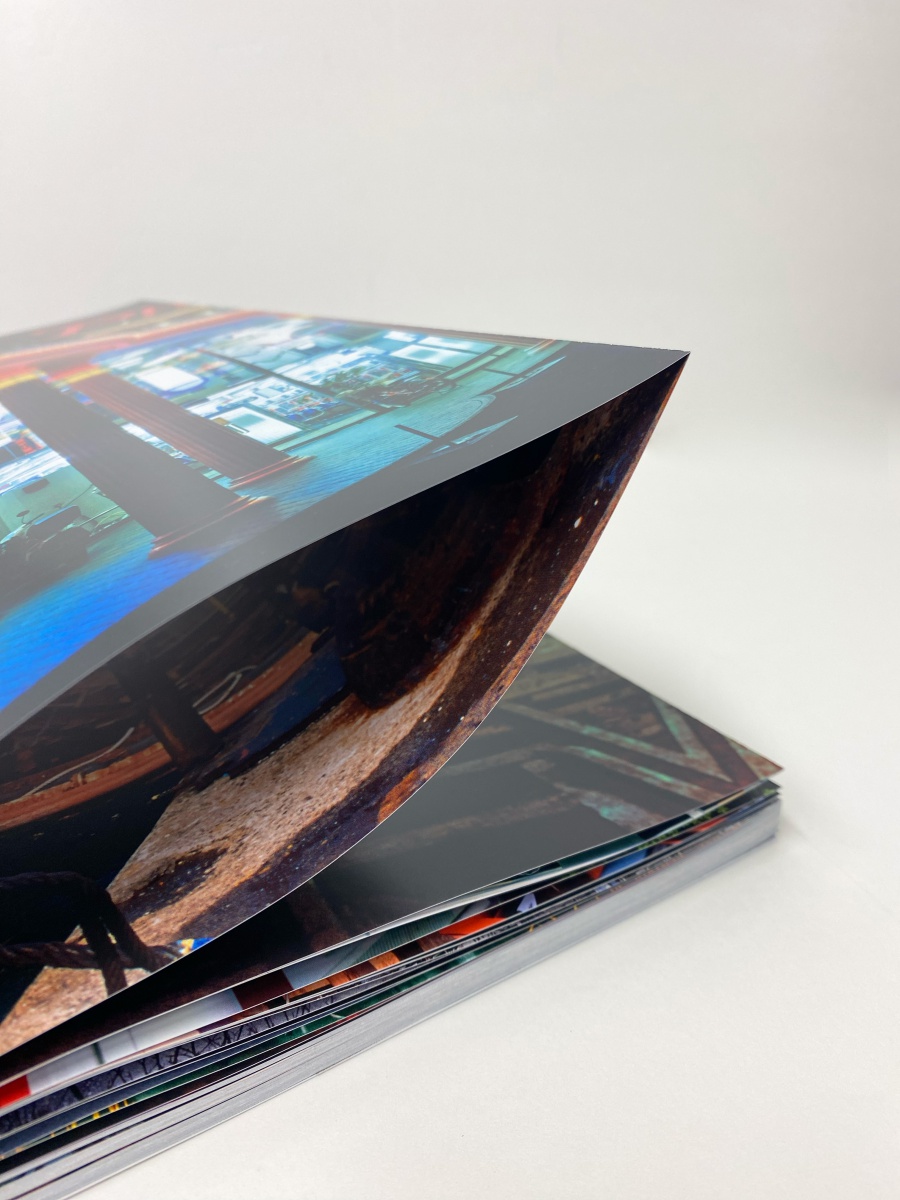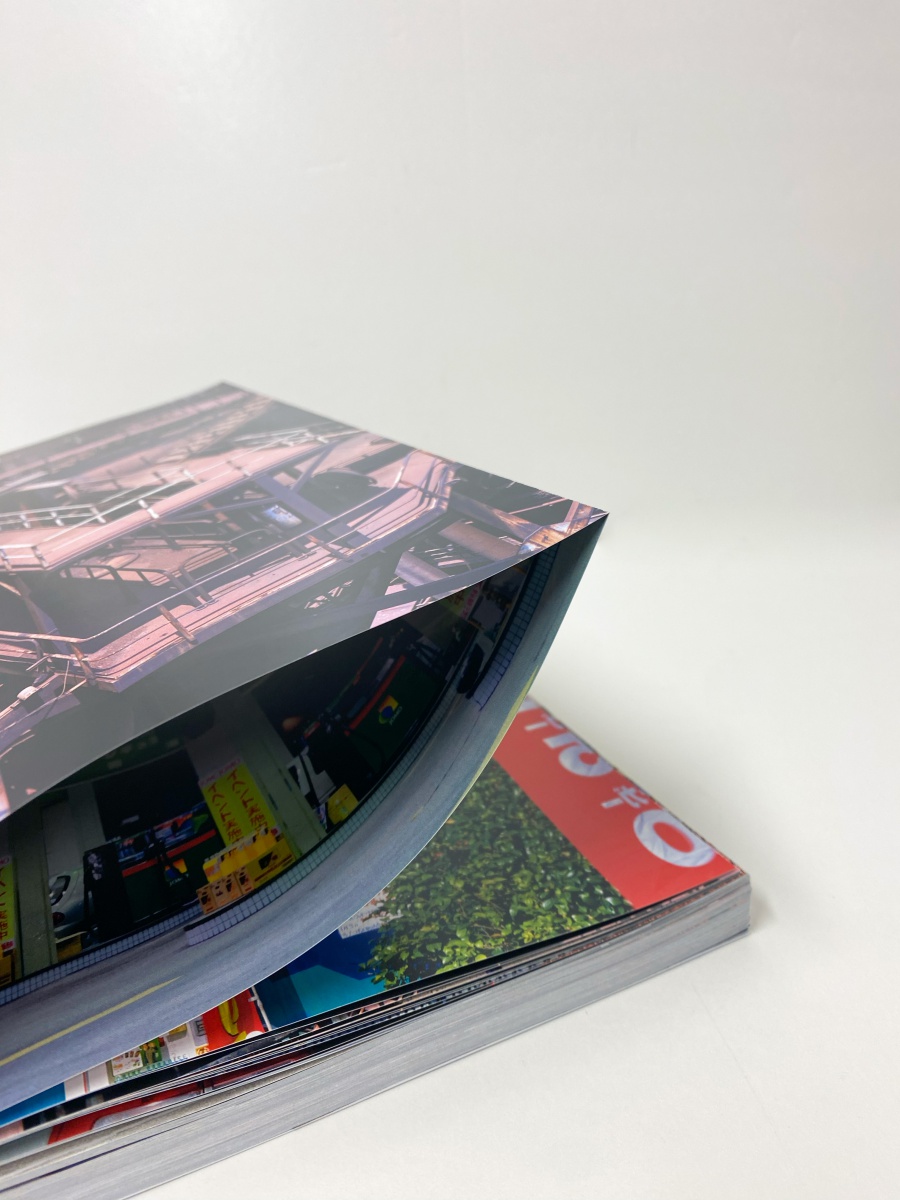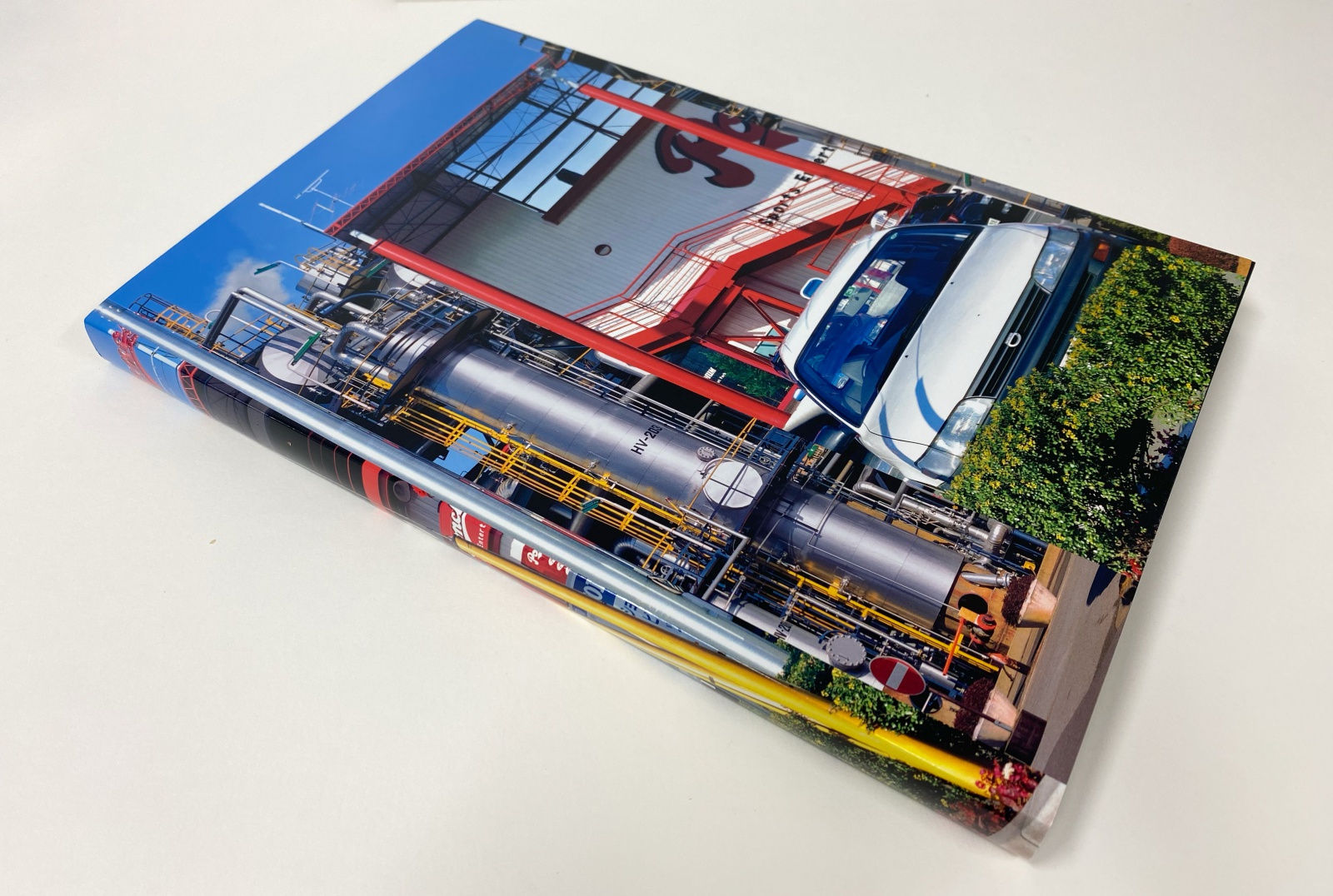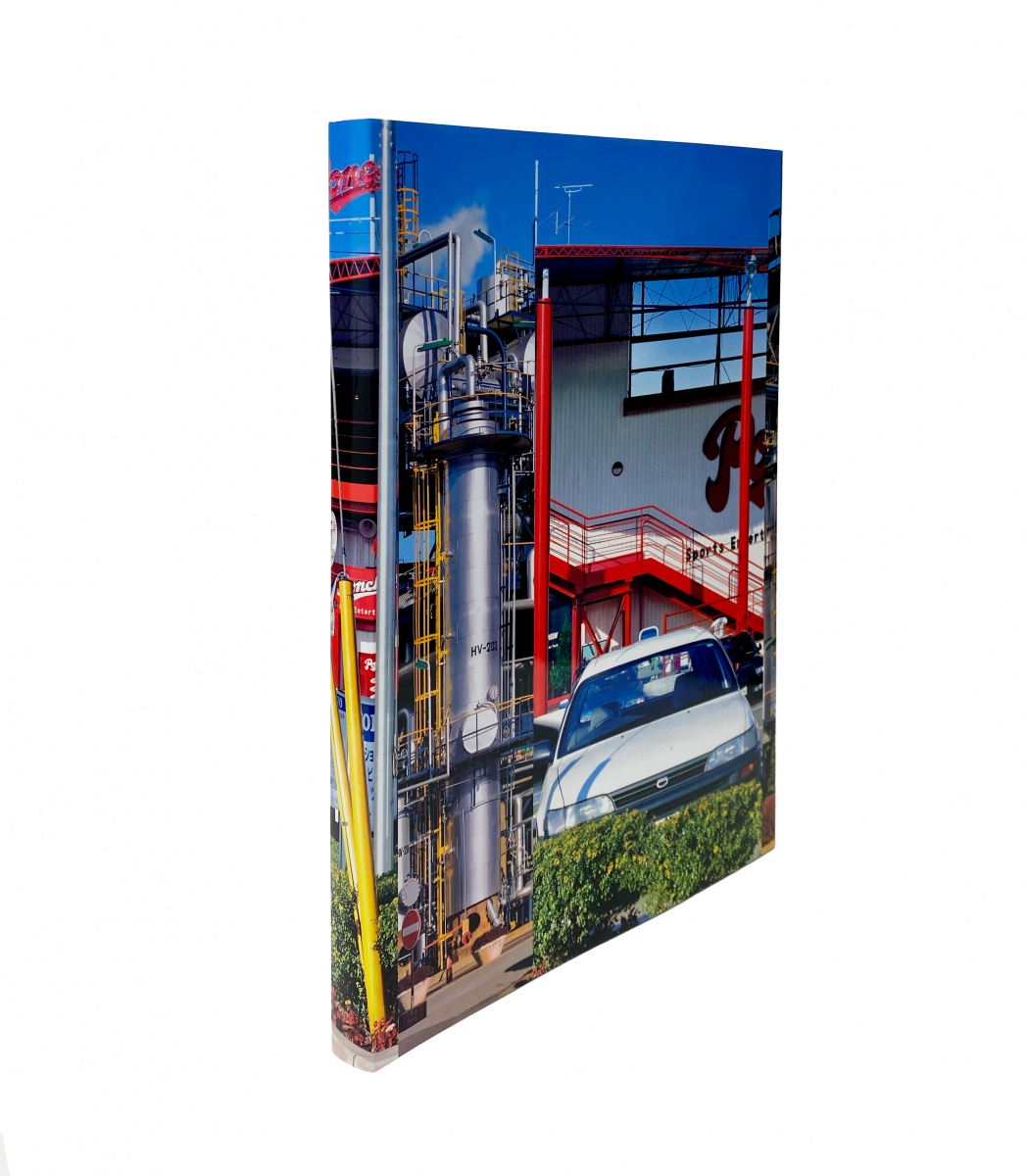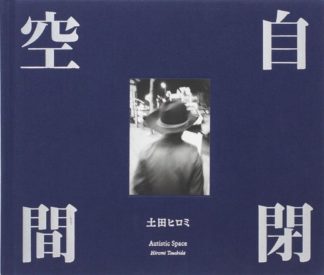1ère édition Signée & Numérotée sur 500.
« En 1989, le monde était à un tournant.
La guerre froide s’est terminée, la guerre du Golfe a éclaté, le massacre de la place Tiananmen s’est produit et au Japon, l’ère de l’empereur Showa a pris fin. Une année au cours de laquelle la disparition de l’ordre mondial d’après-guerre est devenue évidente, puis en 1991, la « bulle » de l’économie japonaise a éclaté. En me tenant à ce moment charnière de l’histoire et en étant témoin de tout ce qui se passe autour de moi, j’ai lancé deux projets distincts : « L’archéologie industrielle » en 1991, et en 1993, la série « Fake Scape ».
« Archéologie industrielle » se concentre sur les sites de production des industries clés pendant la période de croissance économique rapide, tandis que « Fake Scape », deux ans plus tard, est un portrait des magasins avec des conceptions flashy et excentriques qui ont été mis en place le long des autoroutes nationales (principalement Route 16) dans les banlieues des grandes villes. J’ai finalement continué à photographier ces
Les emplois jusqu’en 2005.
En 2021, j’ai eu l’occasion de présenter mes œuvres dans une exposition solo que j’ai intitulée « Ouroborous », juxtaposant les deux projets dans un espace d’image combiné à la galerie Canon S (Shinagawa, Tokyo). Donc, j’étais là, trente ans après avoir commencé à travailler sur ces séries,
et j’ai senti que je pouvais enfin exprimer les réflexions qui avaient été élaborées depuis les années 1990 sur la situation incertaine du Japon au tournant du siècle, tout en pensant que ces images sont encore valables aujourd’hui comme documents qui reflètent l’état général de la nation.
Aujourd’hui, en 2024, l’avancée des infrastructures numériques s’accélère, le cycle de production et de consommation se transforme au-delà de l’intelligibilité par les concepts conventionnels, et semble encore dériver avec la situation toujours fluide. Je crois qu’il est utile d’examiner le statu quo en remontant à ces jours des années 1990. » – Après les mots de Hiromi Tsuchida
1st edtiion Signed & Numbered on 500.
« In 1989, the world was at a turning point.
The Cold War ended, the Gulf War broke out, the Tiananmen Square Massacre occurred, and in Japan, the era of the Emperor Showa came to an end. It was a year during which the demise of the post-war world order became obvious. Then, in 1991, the “bubble” of the Japanese economy burst. While standing right at that pivotal point in history and witnessing all those things happening around me, I launched two separate projects: “Industrial Archaeology” in 1991, and in 1993, the “Fake Scape” series.
“Industrial Archaeology” focuses on production sites of key industries during the period of rapid economic growth, while “Fake Scape,” following two years later, is a portrait of stores with flashy, eccentric designs that were set up along national highways (mainly Route 16) in the suburbs of major cities. I eventually continued to photograph these
places until around 2005.
In 2021, I was given an opportunity to present my works in a solo show that I titled “Ouroborous,” juxtaposing both projects in a combined image space at Canon Gallery S (Shinagawa, Tokyo). So there I was, thirty years after commencing work on these series,
and I felt that I was finally able to express the thoughts that had been elaborating since the 1990s about the uncertain situation of Japan at the turn of the century, while also thinking that these images are still valid today as documents that reflect the general state of the nation.
Today, in the year 2024, the advance of digital infrastructures is accelerating, the cycle of production and consumption transforms in ways beyond intelligibility by conventional concepts, and it seems as though it still drifts along with the continuously fluid situation. I believe that it is a meaningful practice to examine the status quo by looking back on those days of the 1990s. » – After words by Hiromi Tsuchida


